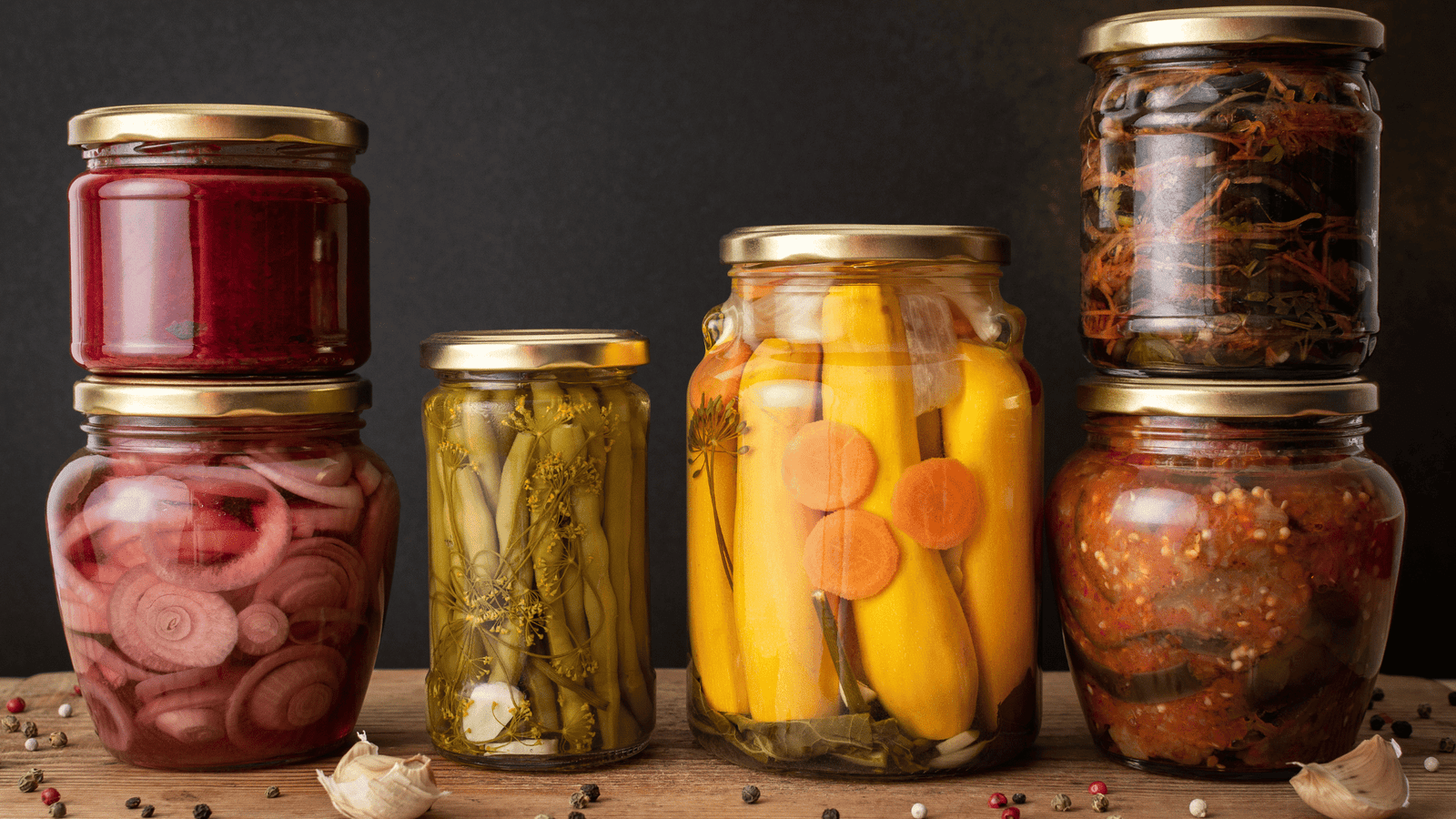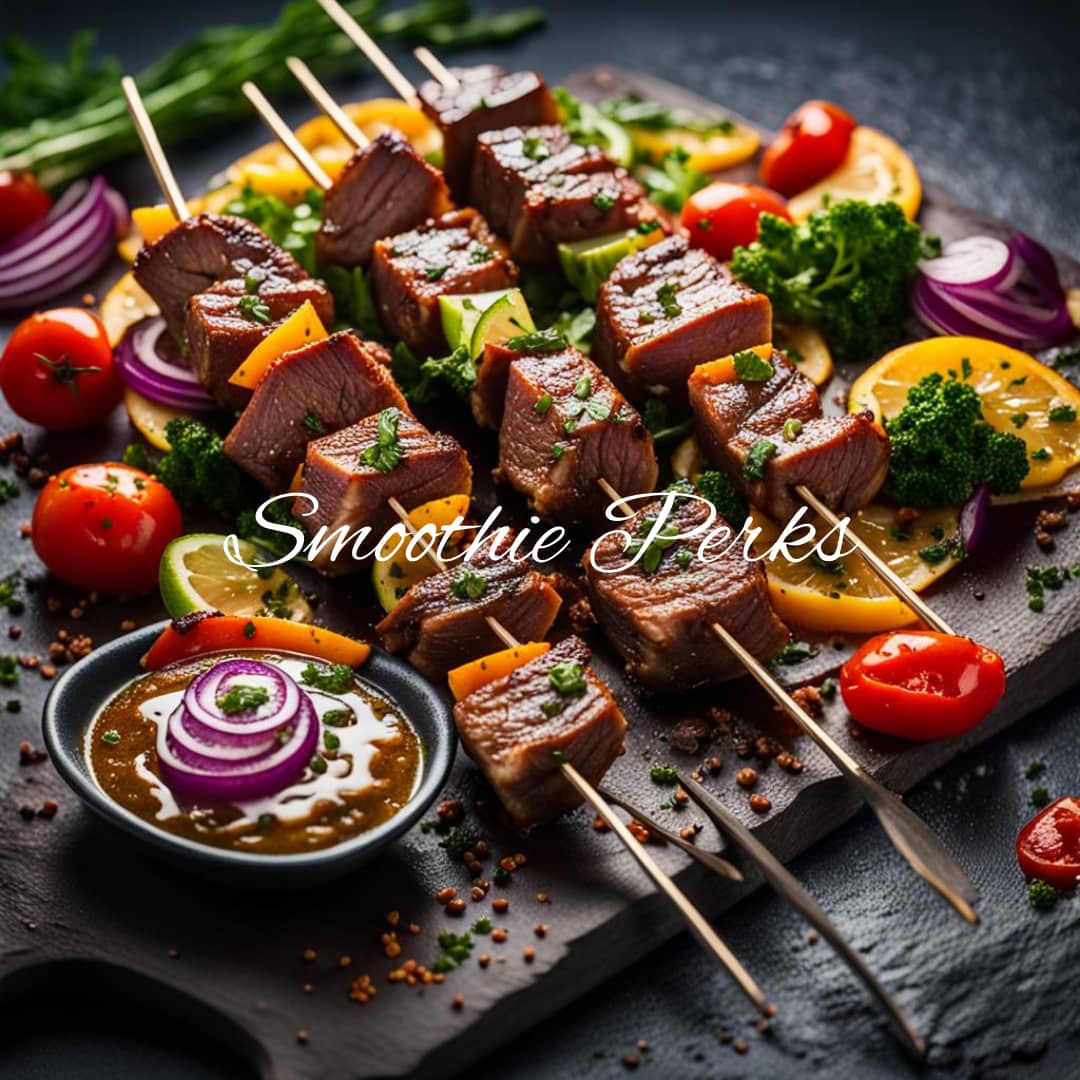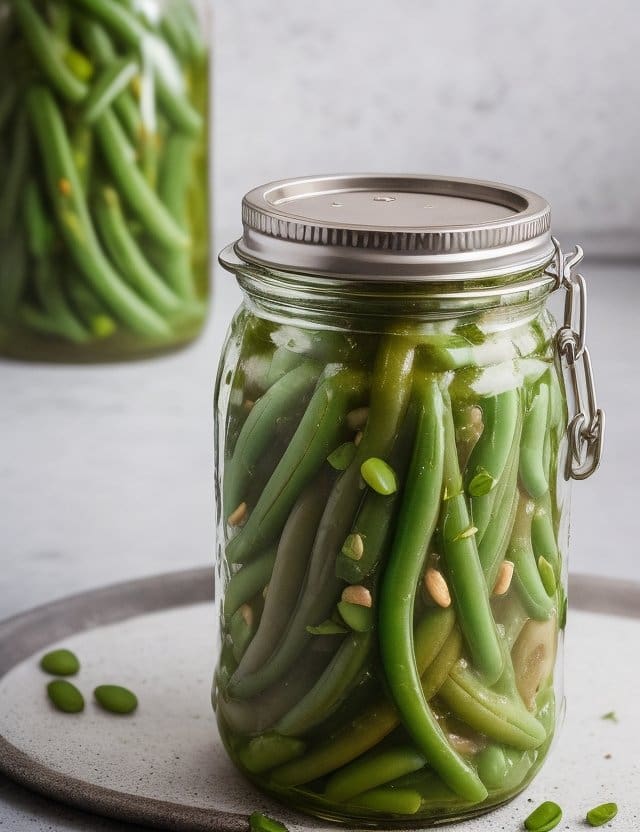Ah, the timeless battle of fermenting vs. canning! Picture this: a bustling kitchen, a medley of ingredients, and the delightful aroma of culinary prowess in the making. But, hold on a second! We’re not just talking about any old cooking technique here. No, siree! We’re diving into the fermenting vs. canning rivalry that has stirred the culinary world for generations.
So, you might wonder, what’s all the fuss about? Fermenting vs. canning – it’s more than just a preservation showdown. It’s a clash of flavors, textures, and methods, each with its own quirky personality. It’s like watching two culinary titans go head-to-head in an epic cook-off! Picture your grandmother’s age-old pickle recipe squaring off against your aunt’s secret canned tomato sauce. Exciting, right? Let’s get ready to rumble (or ferment? Can?) as we journey through the ins and outs of these preservation techniques!

Fermenting: The Funky Flavor Fiesta
Fermenting, oh how it dances on your taste buds! Imagine cabbage gracefully transforming into sauerkraut, or cucumbers waltzing their way into pickles. Fermenting is like a gourmet party for your palate, with tangy flavors that’ll make your taste buds tango! So, what makes fermenting such a flavor-packed affair?
Microbial Magic!
Fermenting is like hosting a microbial symphony in your kitchen. The key players? Friendly bacteria and yeast! These tiny culinary conductors work their magic on your ingredients, breaking them down into deliciously complex flavors. It’s like they’re throwing a fermentation fiesta, and you’re invited to the taste extravaganza!
Textural Tango
When it comes to texture, fermenting takes you on a wild ride. Crispy veggies soften and become delightfully chewy, and the transformation of ingredients is like a metamorphosis right in your jar! The textures can vary from dish to dish, making each ferment a unique experience for your palate.
Probiotic Power
Hold onto your hats, folks, because here’s the scoop on probiotics! Fermented foods are loaded with these friendly gut buddies that can potentially boost your digestive health. It’s like having a party in your tummy, and the probiotics are the life of the shindig!
A Bit of Funk
Now, let’s address the funk factor. Yes, some fermented foods come with an acquired taste and smell – a little funky, if you will! But hey, that’s part of the charm, isn’t it? It’s like the fermentation process is saying, “Hey, I’ve got personality!” So, if you’re a fan of bold flavors and culinary adventures, fermenting might just be your jam!
Canning: The Longevity Champion
Alright, folks, let’s switch gears and talk about canning. If fermenting is the funky party, then canning is the long-lasting marathon! Canning is all about preserving the flavors of the moment, capturing them in a time capsule of taste. But how does it hold up against its funky counterpart, fermenting?
Locked and Loaded
Canning is like the culinary equivalent of locking flavors in a vault. It’s a preservation technique that’s all about keeping things fresh, sometimes for years! From jams to salsas, the flavors you love can be enjoyed even when the seasons change. Talk about savoring the moment!
Texture: The Steady Eddy
When you pop open a jar of canned goodies, you can expect a texture that’s as reliable as your morning coffee. Canning keeps the textures of your ingredients remarkably close to their original state. It’s like preserving a snapshot of the perfect crunch or the ideal tenderness!
Shelf Confidence
Canned goods strut their stuff with shelf confidence! Stacked neatly in your pantry, they’re ready to save the day when you’re in a mealtime pinch. The longevity of canned foods is a huge plus, making them a staple for those “I don’t feel like cooking” moments.
The Simplified Pantry
Imagine this: a pantry lined with rows of neatly organized jars, each holding a flavorful surprise. Canning lets you stock up on seasonal delights and turn your kitchen into a mini grocery store. It’s like having a secret stash of ingredients that are ready to transform into culinary masterpieces!
Fermenting vs Canning: A Face-Off
Okay, folks, here’s where the rubber meets the road! It’s time for the ultimate fermenting vs canning showdown. Let’s break it down and see how these preservation techniques stack up against each other. Grab your popcorn (or your sauerkraut) – it’s time for the battle of the kitchen titans!
Flavor Frenzy: Fermenting Takes the Lead!
When it comes to flavor, fermenting struts its stuff with flair. It’s the master of complexity, turning humble ingredients into taste explosions. Fermented foods come alive with tanginess and depth, creating a symphony for your taste buds that can be as soothing as a lullaby or as exciting as a rock concert!
Longevity Smackdown: Canning for the Win!
If longevity is the name of the game, canning sweeps in for the victory. Canned foods have an impressive shelf life, making them the superheroes of the pantry. Whether you’re hankering for summer fruit in the dead of winter or a taste of fall in the midst of spring, your canned creations will come to the rescue!
Time and Effort: Fermenting Keeps You Guessing!
Ah, time and effort – the precious commodities we all juggle. Fermenting can be a bit of a mystery in terms of timing. The microbes work at their own pace, and while the results are usually worth it, impatience might just be your culinary sidekick! On the other hand, canning is like a recipe that you can follow to the letter. It’s a step-by-step process that’s more predictable and less of a culinary guessing game.
Texture Tango: A Draw!
When it comes to textures, both fermenting and canning have their moments to shine. Fermenting offers that unique chewy goodness that only time can create, while canning preserves the original textures, ensuring that each bite is a consistent delight. It’s a tie in the texture department – a win-win for all!
FAQs: Your Burning Questions Answered!
Q1: Can I ferment and then can my foods? A1: Absolutely! You can combine these techniques for an exciting culinary experiment. Fermenting can add a zing of flavor before you seal the deal with canning.
Q2: Are fermented foods as nutritious as fresh ones? A2: Fermented foods can have increased nutritional value, thanks to the production of probiotics and other beneficial compounds during fermentation. So, in some cases, they might even outshine their fresh counterparts!
Q3: Can I ferment and can any type of food? A3: While many foods can be fermented or canned, some are better suited for one technique over the other. Fruits and high-acid foods are often great candidates for canning, while veggies and dairy lend themselves well to fermentation.
Q4: Is canning difficult for beginners? A4: Not at all! Canning is a straightforward process that can be tackled by beginners. Just follow the recipe and safety guidelines, and you’ll be a canning pro in no time.
Conclusion: Finding Your Culinary Sidekick
So, there you have it – the fermenting vs. canning face-off that’s been simmering in kitchens for ages. It’s a showdown of taste, texture, and culinary prowess that’s left us all salivating for more! Fermenting brings the tangy, the funky, and the probiotic punch, while canning offers longevity, reliability, and the joy of preserved flavors.
Who Wins The Fermenting vs. Canning Challenge?
But in the end, who wins? Well, it’s not about picking sides; it’s about finding your culinary sidekick! Are you a flavor adventurer, ready to embrace the tangy mysteries of fermentation? Or are you a time-traveling taste enthusiast, eager to preserve the essence of each season through canning?
Whichever path you choose, remember that both fermenting and canning have a place in your kitchen. They’re like old friends – each with their own quirks and charms, ready to join you on your culinary journey. So, roll up your sleeves, grab your jars, and let the fermenting vs. canning adventure begin!
ⓘ Disclaimer:
Please note that the information provided in this blog post is for general informational purposes only and does not constitute professional advice. The author of this article is not an expert. It is important to consult with a qualified professional. The content of this blog post is based on the author’s personal experiences, research, and opinions. SmoothiePerks.com nor the author assumes no responsibility or liability for any consequences resulting from the use of this information. By reading this blog post, you acknowledge and accept that the information provided here is not a substitute for professional advice.
ⓘ Disclosure
Amazon Associates Program: smoothieperks.com is a participant in the Amazon Services LLC Associates Program, an affiliate advertising program designed to provide a means for sites to earn fees by advertising and linking to Amazon.com.
ⓘ Affiliate Disclaimer/Disclosure:
Please assume any links to 3rd party products are affiliate links for which I may receive a small payment from the vendor if you decide to sign up or purchase – at no cost to you.




